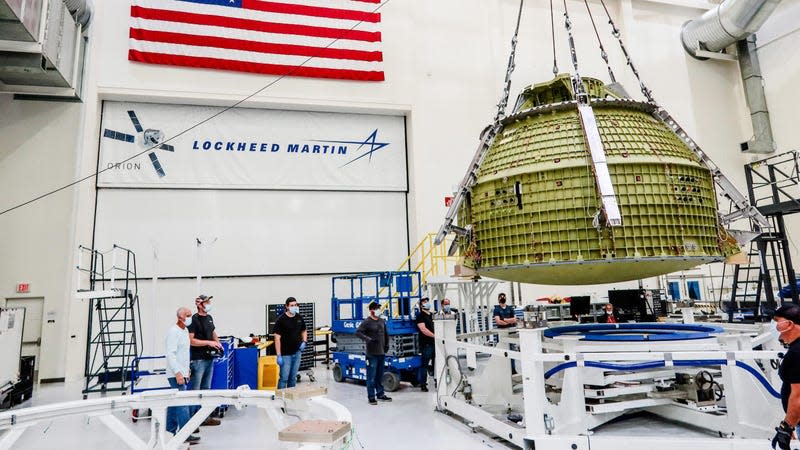NASA Wants More Spacecraft for Its Upcoming Artemis Moon Missions

NASA has requested three new spacecraft from Lockheed Martin, which the space agency needs to fly astronauts to the Moon as part of its upcoming and ambitious Artemis program.
The company has already delivered two Orion spacecraft and is currently in the process of building three more for Artemis missions 3 through 5. The newly announced batch of Orion spacecraft is meant for Artemis 6 to 8, the company announced on Thursday. The next-generation crew module is designed for deep space exploration, carrying astronauts to the Moon and possibly even further destinations like Mars in the future.
Read more
“This order includes spacecraft, mission planning and support, and takes us into the 2030s,” Lisa Callahan, vice president and general manager for Commercial Civil Space at Lockheed Martin, said in a statement. “We’re on the eve of a historic launch kicking off the Artemis era and this contract shows NASA is making long-term plans toward living and working on the Moon, while also having a forward focus on getting humans to Mars.”
NASA’s Artemis program is designed to return humans to the lunar surface more than 50 years after Apollo. The Artemis 3 mission aims to land astronauts on the Moon no earlier than 2025 and more lunar missions will follow to establish a sustained and sustainable presence at and around Earth’s natural satellite.
In 2019, NASA signed a contract with Lockheed Martin to construct upwards of one dozen vehicles as part of the Orion program. The contract is an “indefinite-delivery/indefinite-quantity contract that includes a commitment to order a minimum of six and a maximum of 12 Orion spacecraft, with an ordering period through Sept. 30, 2030,” NASA wrote in a 2019 statement. The space agency ordered the Orion spacecraft for Artemis missions 3 through 5 for $2.7 billion, with an additional $1.99 billion now being added to support Artemis missions 5 through 8.
The first Orion spacecraft launched in 2014 for its inaugural flight test, traveling through the Van Allen belt and reaching an altitude of 3,600 miles (5,800 kilometers) above Earth.
Lockheed Martin’s second Orion spacecraft is currently awaiting launch for the Artemis 1 mission that’s now scheduled to take place in November after suffering numerous delays. The inaugural mission for the lunar program is a test of the uncrewed spacecraft as it journeys to the Moon and back and re-enters Earth’s atmosphere. While one spacecraft gears up for liftoff, the second and third Orion spacecraft are undergoing assembly at NASA’s Kennedy Space Center in Florida for Artemis 2 and 3. For Artemis 2, the Orion spacecraft will have a crew on board, but won’t land on the Moon. That’s the job of Artemis 3, in which astronauts will travel aboard Orion and touch down on the lunar surface.
“Work is well under way on the Artemis 4 craft including welding the pressure vessel together at NASA’s Michoud Assembly Facility near New Orleans and the heat shield at Lockheed Martin’s facility near Denver, and work has already begun on the Artemis 5 vehicle,” Lockheed Martin wrote in the statement.
As NASA awaits the much-anticipated launch of its debut Artemis mission, the space agency is doubling down on its commitment to the lunar program and building an impressive fleet to explore the lunar environment.
More: NASA Wants Ideas for a New Lunar Lander
More from Gizmodo
Sign up for Gizmodo's Newsletter. For the latest news, Facebook, Twitter and Instagram.

